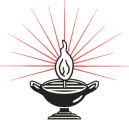It was 2005 the last time a pope died in the exercise of his office. These were strange days, the lees of a past unimaginable to those who did not drink them. George W. Bush was president, and his wars were, for the most part, popular. Apple was a buzzy company, but because of its personal computers; there was no iPhone. At Mass, we Catholics still said “born of the Virgin Mary” and “one in being with Father” during the Creed—and thought nothing of it. The Holy Father was widely considered a Cold War hero: In the United States, he was often shown in photos standing next to Ronald Reagan, whom he outlived by only ten months.
I was in second grade, and my memories of John Paul II’s late life and his death are hazy at best. At my parochial school, we watched the funeral on a giant projector screen and were told that we were witnessing history in the making. Of course, it was just a recording. The actual funeral took place at 4:00 a.m. Eastern time when we are all fast asleep.
My mother cried a lot. Many Rosaries were said for the repose of the pope’s soul and for the future of the Church. That must have made some impression on me—I was seven years old—because my mother still has a note I wrote her on a piece of scrap paper:
Dear Mommy,
I know it’s very sad, but everyone has to die.
Your son,
Nic
My older sister, who has always been more encouraging than I, tacked on an addendum.
I think the Pope will go to Heaven!
The Church was of the same opinion, and in 2014 Pope Francis canonized John Paul II before a crowd of more than five hundred thousand people in Saint Peter’s Square.
I bring all this up not to draw some contrast between John Paul II and Francis—to say nothing of Pope Benedict XVI, of whose papacy I remember very little—but simply to observe that for pretty much every Catholic under the age of thirty, this is the first time that we have consciously experienced the death of a pope while he was pope. For my own part, I did not expect it to be so emotional. Francis’s papacy was fractious and he courted controversy, to put it charitably. And yet when I first heard the news—again, from my mother—my heart jumped. The pope dead? The chair empty? I was shocked, stricken: I don’t think I have felt that way since my grandfather died.
In the following weeks, those initial feelings have softened to an abiding melancholy. All the churches near my house in Washington, D.C. are decked out in black, a sign of mourning incongruous with one of the most beautiful springs the city has seen in years. At Mass, the priests leave a blank spot in the Canon where typically they would list the name of the pope alongside that of the local bishop. Everything is empty. I suppose this is what it feels like to be a sedevacantist. The rest of the world rolls along oblivious and carefree, while you are left stuck, waiting for time to start again.
In the old rite of Confirmation, the bishop would slap the newly confirmed on the cheek after anointing him. The Catechism of the Council of Trent explains that this strange gesture should remind the Church militant to “be prepared to endure with unconquered spirit all adversities for the name of Christ.” What it leaves out—but what I think is implicit in the bishop doing the slapping—is the understanding that more often than not, the adversity we must endure is within the bounds of the Church. For some it is the reign of a pope; for all Catholics it is his absence.
Unlike a true sedevacantist, I trust that I will see the chair filled again. Time starts, and it starts quickly. The conclave will meet; the electors will choose a new pope; I will accept him with the same earnest joy I did Francis. But until that day, I pray for them both, the pope who was and the one who will be.




